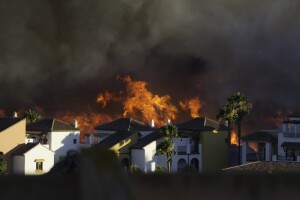As natural disasters continue to intensify, builders must prioritize resiliency, climate adaptation, and green building in all new-home construction.
In a recent contributed article for Entrepreneur, Thrive Home Builders’ CEO Gene Myers reflects on the recent Marshall Fire, one of the most destructive fires in Colorado's history. During the fire, local builders in the area watched anxiously to see what would become of their customers and houses. But after the fire, Myers was left asking himself “how much of our resilience was due to luck and how much was due to our building practices, which are centered on ensuring the health and safety of occupants?” See some of his thoughts below.
To be sure, the incidence of severe weather is accelerating due to climate change. In 2020, the U.S. suffered a staggering 22 natural disasters that caused at least a billion dollars in damage, surpassing the previous record of 16 set in both 2017 and 2011. These 2020 events included a record seven tropical cyclones, 13 severe storms, one drought, and one wildfire. Last year, we almost met the record again — with 20 separate billion-dollar natural disasters, including a spate of deadly tornadoes that ripped through the heartland and the southeast.
The Marshall Fire was a sobering example of how climate change is impacting communities. It arose from a historic drought in Colorado, with a six-month run of almost no significant precipitation. And that drought followed a very wet period that gave rise to vegetation that eventually became fuel for the fires. Can we say to ourselves confidently that this is a fluke that will never happen again? Recent wildfire trends on the West Coast give us reason to doubt it.
Many real-estate developers look at these trends and say, what could we possibly do? They argue that climate is out of our control. But there are several things very much within our control as builders — and we have a responsibility to take them into account.
Read More
